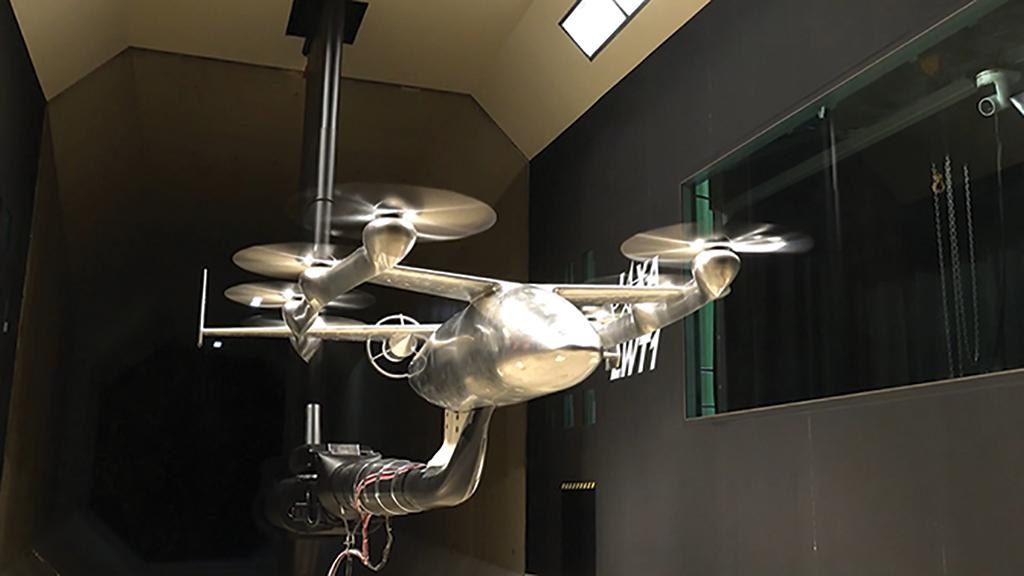
Japan’s Honda confounded industry skeptics when it launched the HondaJet in 2005 and carved itself a successful niche at the light end of the business jet market. Now the world’s eighth-ranked automaker wants to leverage its core technologies to enter new business areas ranging from electric air taxis to smallsat launch vehicles.
Honda has unveiled plans to develop a mobility ecosystem centered on electric vertical-takeoff-and-landing (eVTOL) vehicles. Recognizing the limitations of battery technology and that the market is already crowded with all-electric urban air taxis, the company intends to develop a hybrid-electric vehicle with intercity range.
- Five-seat hybrid-electric VTOL air taxis in service by 2030
- Reusable smallsat launch vehicle in development
Development of the eVTOL, which will be carried out by research and development subsidiary Honda R&D, draws on the company’s experience certifying the HondaJet light business jet and its GE Honda HF120 turbofan engine. Technology for the high-speed generator will come from Formula 1 motor racing, from electric vehicles for motors and batteries and from self-driving cars for flight controls.
Automakers have taken a strong interest in the eVTOL market, with Toyota becoming an investor and strategic manufacturing partner for Joby Aviation and Stellantis taking on similar roles with Archer. Daimler is an investor in Volocopter, and Chinese carmaker Geely now has a joint venture with Volocopter to launch urban air mobility in China.
Volkswagen, General Motors and Ford have all shown interest in eVTOL technologies, but South Korea’s Hyundai was the first carmaker to launch development of its own urban air taxi. Hyundai has since been followed by Chinese electric carmaker Xpeng and more recently by Honda.
“Honda has been studying the potential and the challenge of eVTOL for several years,” says Vertical Flight Society Executive Director Mike Hirschberg. “We will likely see the remaining few automobile manufacturers make announcements within the next year.”

The Japanese carmaker has conducted wind-tunnel tests and flown subscale models of its winged eVTOL design, which has eight lift rotors mounted on two outriggers for vertical flight and two ducted propellers for propulsion in forward flight.
The series hybrid propulsion system is based on a gas turbine driving a generator to charge batteries and will give the piloted four-passenger vehicle a range of 400 km (250 mi.). Research on component technologies for the turbogenerator were conducted in 2017-18, which included indoor flight tests of prototypes, the company says.
“Our plan is to conduct technology verification with prototypes in 2023 and conduct flight tests of a hybrid demonstration model in 2025,” the company says. Prototypes will be built and flown in the U.S. A decision to commercialize the eVTOL will be taken before the end of 2025. “If we go ahead, we plan to certify in 2030,” Honda says.
The Japanese carmaker intends to be the manufacturer of the eVTOL vehicles and coordinator of the mobility system. “However, we will be actively discussing a collaborative structure with external parties,” the company says. This includes operators of the aircraft and providers of airspace services and infrastructure.
A video released by the company shows a customer using the “Honda multimodal service” app on their smartphone to order a self-driving car that takes them to a local “Honda mobility hub” to catch an eVTOL flight into the city, where a self-driving shuttle is waiting to take them to their destination.
The carmaker’s goal is to create a “new layer in the sky” between ground transportation and conventional aircraft. Honda estimates the market could be worth $150 billion by 2040, doubling to $300 billion with the introduction of autonomous flight capability.
Definition of the requirements for the mobility ecosystem using model-based system engineering has begun as part of a wider transformation of Honda into a provider of systems and services, the company says.
Development of a reusable launch vehicle for small low-Earth-orbit satellites began in 2019, Honda says. The program, to develop a vehicle able to launch payloads of up to 2,000 lb., is drawing on the company’s core fluid and combustion technologies as well as those for guidance and control.
A third new area being explored by Honda is the avatar robot. With a multifingered hand and intuitive control supported by artificial intelligence, the robot will allow humans to work remotely in difficult environments, such as the surface of the Moon.
Honda has developed a robotic hand that combines the delicateness and strength of a human hand, which is intended to allow the robot to use tools designed for humans. The company is now reducing the size of the robotic hand and working to enable in-hand repositioning of objects to provide a better grip. The gripping task has been described as “very difficult” for robotic hands.
Honda plans to begin technology demonstrations with a slimmed-down robotic hand in 2023, with the goal of fielding practical application in the 2030s. One of the planned uses is on remote-controlled robots for development activities on the lunar surface.
The carmaker has already announced joint research with the Japan Aerospace Exploration Agency to build a circulative renewable energy system for the lunar surface by leveraging its hydrogen fuel-cell power generation and high-differential-pressure water electrolysis technologies.
Using renewable electricity, the electrolyzer will decompose water and store the resulting hydrogen and oxygen. A fuel cell will then use the hydrogen and oxygen to generate electricity. The oxygen can also be used for life support in lunar habitats and the hydrogen as fuel for rockets.






Comments